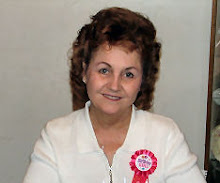Christmas Customs and Traditions by Shanna Wegrocki.
Let's take a brief break from writing and discuss a well-researched piece on Christmas world traditions.
Christmas tree lots are on the corners, lights are twinkling on houses, and decorations are everywhere you look, but this is one of the few holidays that is celebrated around the world.
China, for instance, celebrates by hanging paper lanterns, and crafting paper chains and flowers for their Christmas trees. They get a visit from Dun Che Lao Ren, (their version of Santa Claus).
India celebrates Bada Din (Big Day) with festivals and large feasts. Since they don’t have pine trees, they use mango or banana trees instead. For them, it’s a time of spring-cleaning and whitewashing their homes. Shopping and baking abound.
In Argentina and many South American countries, people celebrate by going to church and taking part in religious rituals. Families feast together and trade presents while celebrating the birth of Jesus. They thrive on dancing, caroling, and fireworks displays for twelve days, ending on Three Kings Day in January.
Swedes start Christmas festivities on December 13 with the Santa Lucia ceremony. They set up trees and decorate them with candies, straw ornaments, and small gnomes. Christmas Eve ends with a candlelight procession to church. The Christmas gnome, Tomte, (believed to live under the house), leaves gifts for the family.
Spain starts their holiday season with the feast of the Immaculate Conception on December 8th. The big cathedral in Seville hosts a ceremony that includes Los Seises, the dance of six, which is a ritual dance performed by ten boys in elaborate costumes. On Christmas Eve, known as Nochebuena, families feast together around the Nativity scene and light tiny oil lamps when the stars come out.
Germany starts their Christmas season even earlier, with St. Nicholas Day on December 6th. Children put out their shoes and if they’ve been good, they receive gifts, but if they’ve been bad, they can expect twigs. Given that the Christmas tree, as we know it, originated in Germany, it’s no surprise that the tree is a point of pride in many German homes. On Christmas Eve, they unveil it and serve a feast.
The French trade the Christmas tree for a Nativity scene and populate it with small, clay figurines called Santons or Little Saints, which local craftsmen prepare. They also serve Christmas cakes in the shape of a Yule log. On Christmas Eve, children leave wooden clogs out for Pere Noel to fill. Families attend midnight Mass and return home for a giant Christmas feast called Le Reveillon. In some areas of France, children get gifts on both St. Nicholas Day and Christmas. Adults usually exchange their gifts on New Year’s Day.
The Italian Christmas season starts with the Novena, nine days of special prayers and religious devotion. Children perform with carols and reciting poems to receive coins and musicians sing tributes to the Virgin Mary. Instead of writing letters to Santa, children write notes to their parents. Families often build a Presepio, their own replica of the manger where Jesus was born, and they worship around it. After fasting 24 hours before Christmas, they enjoy a lavish feast. In some places, they open gifts after midnight Mass, but most wait until after the Feast of Epiphany on January 6. That’s when Befana, an ugly witch, brings gifts on her broomstick. The legend of Befana says she missed seeing Jesus in the manger because she got lost, so now she goes house to house looking for Him, leaving gifts for good children and charcoal for bad ones.
In all probability, the closest to American tradition is Britain. It starts with Advent, four Sundays before Christmas. Instead of Santa Claus, Father Christmas brings presents. Children write letters to him and then toss them into the fireplace where he reads their requests in the smoke. The day after Christmas is Boxing Day, so called because people used to collect money in boxes made out of clay, which they distributed to the poor.
Most of America’s Christmas traditions trace back to Victorian times in England. Everything from Christmas stockings to “A Christmas Carol” originated there.
Christmas is an important holiday all over the world. Whether you’re decorating a tree or buying gifts, Christmas is the one holiday that transcends cultural differences and draws people together. Have a very Merry Christmas!
All writing courses are only $177 until the end of the year. Don't miss out on this great bargain at http://www.creativewritinginstitute.com.
Wednesday, December 21, 2011
Subscribe to:
Comments (Atom)
